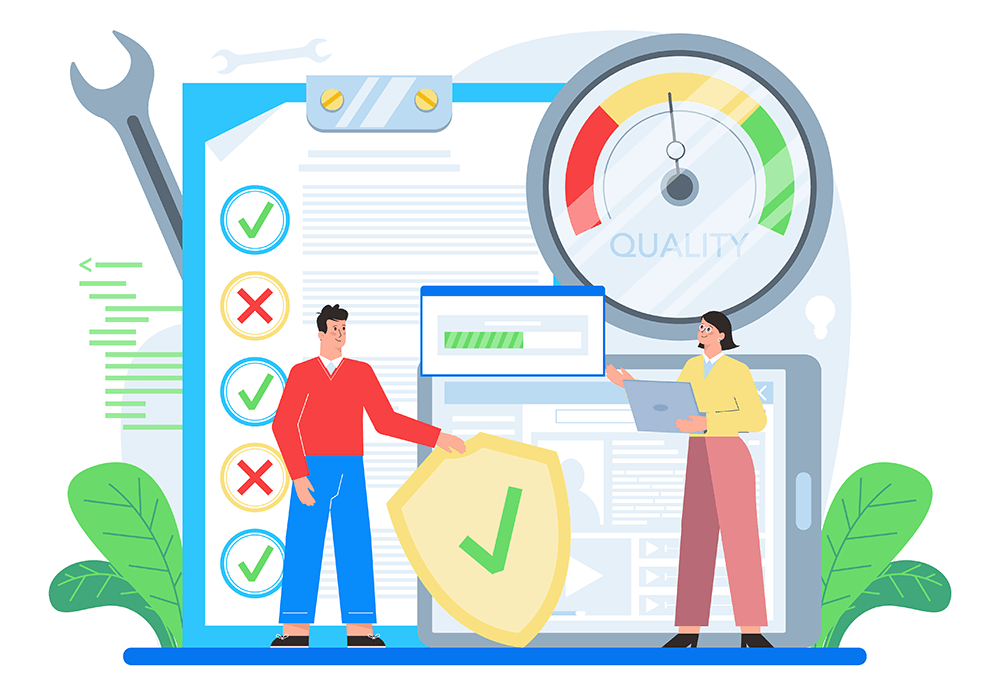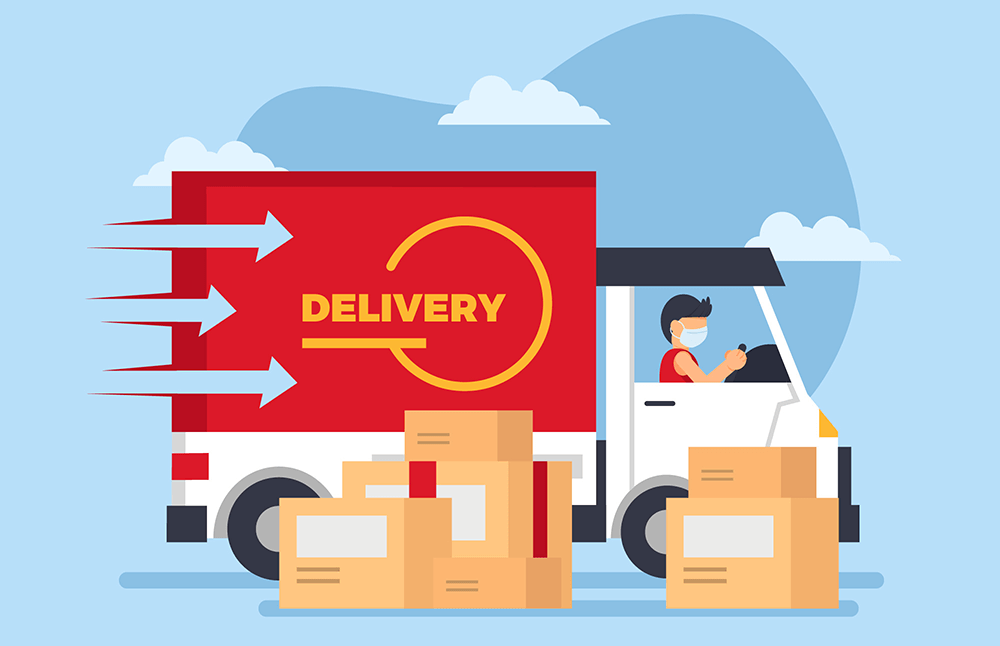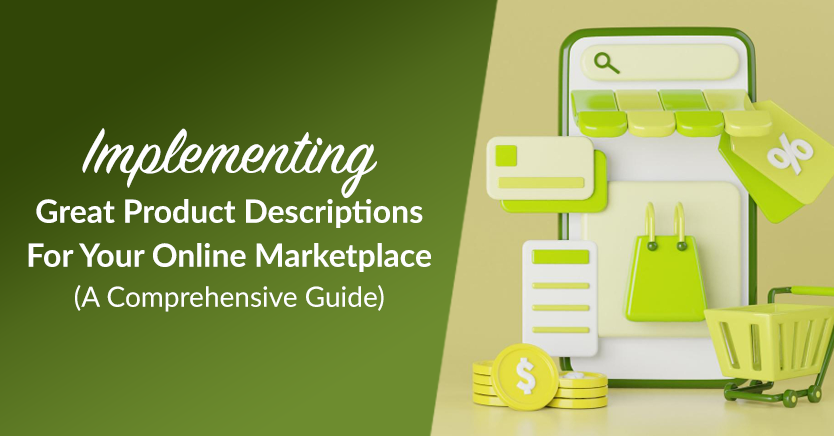
Running a successful online multi-vendor marketplace entails more than just attracting customers and making sales. One significant aspect to consider is minimizing marketplace returns, which can eat into your profits and affect customer satisfaction.
Whether you’re launching or already operating a marketplace, you need to seek ways to reduce the occurrences of refunds. For one thing, this can boost your profits. For another, it can give you the peace of mind that you’re capable of meeting your customers’ expectations and making them happy.
Today, we’ll discuss 8 powerful tips can help streamline your operations and keep marketplace returns to a minimum.
So let’s dive in!
8 Powerful Ways To Minimize Marketplace Returns
Do you want to drastically decrease the likelihood of your customers asking you for refunds? Then do your best to implement the following 8 strategies!
1. Clear product descriptions
Crafting clear product descriptions is essential if you want to effectively convey information about your products to potential buyers. A well-written description not only informs customers about the features and benefits of the product but also manages their expectations. As a result, it minimizes the chances of misunderstandings that could lead to marketplace returns.
A great strategy is to list a product’s key features and explain how they can solve the issues that customers often worry about. Remember, it’s not enough to mention features; you should highlight how they can improve buyers’ lives, as well.
In addition, it’s crucial to list the accessories the product comes with, and how those accessories improve said product and help customers.
Example
Imagine you’re selling a smartphone case on your online marketplace. You can list its key features like so:
Key Features:
- Superior Shock Absorption: Our case features advanced shockproof technology to protect your phone from impacts, ensuring peace of mind wherever you go.
- Precision Fit: Engineered to perfectly fit your (Phone Model), our case provides full access to all ports, buttons, and camera lenses without adding unnecessary bulk.
- Sleek Design: With its slim and sleek design, our case adds minimal bulk to your phone while offering maximum protection.
- Scratch-Resistant: The durable material of our case prevents scratches, keeping your phone looking brand new for longer.
- Compatibility: Compatible with (Phone Model)
Package Includes:
- 1x Premium Shockproof Smartphone Case for (Phone Model)
Investing effort and time into crafting detailed product descriptions like this can help customers make informed purchasing decisions. By highlighting key features, benefits, and compatibility, you set clear expectations for what the customer will receive, lessening the likelihood of marketplace returns due to misunderstandings or dissatisfaction with the product.
For more tips on writing great product descriptions, check out our article, “Implementing Great Product Descriptions For Your Online Marketplace: A Comprehensive Guide.”
2. High-quality product images
Having high-quality product images is crucial for providing customers with a clear understanding of the goods your multi-vendor marketplace is selling. By giving customers a closer look at what they can expect to receive, these images play a significant role in diminishing the chances of dissatisfaction upon delivery.
Example
Imagine you run an online marketplace specializing in handcrafted items. To ensure the best product images, you could implement the following strategies:
- Quality reigns supreme: Invest in professional product photography to ensure high-resolution images that capture fine details from every angle. For the best results, use proper equipment and lighting, and enhance the images further with digital editing.
- Variety adds depth: Provide diverse and comprehensive perspectives through contextual shots, close-ups, and size references. This can enrich customers’ understanding of the product and even enhance their shopping experience. Don’t forget to pay particular attention to key features.
- Consistency and cohesion: Maintain consistency in branding elements, backgrounds, and image editing styles. This allows the production of a professional and cohesive image gallery that’s more likely to draw customers in and convince them of a store’s professionalism.
- Optimization for speed and accessibility: Optimize images for fast loading times and compatibility across devices so that customers will have an easy and enjoyable time looking at product picture galleries. Furthermore, use descriptive alt text for accessibility and SEO benefits.
By applying these principles, you can craft a product image gallery that not only attracts customers but also persuades them to make a purchase. Ultimately, this will boost sales and improve the overall shopping experience.
Looking for more tips on creating exceptional product images? Then read our article, “WooCommerce Product Image Gallery: How To Elevate Your Marketplace Showcase!”

3. Robust vendor screening
Implementing a robust vendor screening process is essential for maintaining the quality and integrity of your online marketplace. After all, when you thoroughly vet vendors, you can ensure that they meet your marketplace’s standards and policies. Ultimately, this reduces the likelihood of selling subpar products that could result in marketplace returns.
Example
Let’s say you’re running a fashion marketplace where vendors sell clothing and accessories. Your vendor screening process could include steps such as:
- Application review: Require potential vendors to submit an application detailing their business information, product offerings, and relevant experience. Then, review these applications carefully to assess whether the vendor aligns with your marketplace’s values and target audience.
- Quality assessment: Evaluate the quality of the products offered by the vendor by requesting samples or conducting product inspections. Ensure that the products meet your marketplace’s standards in terms of design, materials, and craftsmanship.
- Compliance check: Verify that the vendor complies with all legal and regulatory requirements, such as obtaining necessary licenses and permits for their business operations. This step helps mitigate potential legal risks for your marketplace.
- Reputation analysis: Research the vendor’s reputation by checking customer reviews, social media presence, and any past business dealings. A seller with a great reputation for reliability and making customers happy is more likely to deliver high-quality products and minimize marketplace returns.
- Communication and support: Assess the vendor’s communication skills and responsiveness to inquiries. Effective communication is crucial for resolving issues quickly and ensuring a smooth collaboration between the vendor and your marketplace.
So, what happens when you implement a thorough vendor screening process? Basically, you can onboard reliable vendors who are committed to delivering high-quality products and adhering to your marketplace’s policies. This proactive approach helps minimize instances of marketplace returns and enhances customers’ overall shopping experience.
For more advice on ensuring only the best vendors join your marketplace, read our article, “Streamlining The Vendor Application Process: Your Ultimate Guide.”
4. Transparent return policies
Transparent return policies are vital for fostering trust and confidence among both vendors and customers in your online marketplace. By clearly communicating these policies, you establish expectations and provide reassurance to customers, ultimately leading to a reduction in requests for marketplace returns.
To create an effective return policy, clearly define its terms, including eligibility criteria, return timeframe, acceptable reasons, and any associated fees. Ensure accessibility by prominently displaying the policy on your website, during checkout, and in confirmation emails.
Of course, you should also offer responsive customer support through various channels. Moreover, encourage customer feedback to continuously improve the return process, as this can help you minimize future marketplace returns.
Example
In the example below, we show a small part of a marketplace returns policy:
Eligibility Criteria:
- To be eligible for a return, your item must be unused and in the same condition that you received it. It must also be in the original packaging.
- Several types of goods are exempt from being returned, including software, downloadable products, and gift cards.
Return Process:
- Initiate Return: To initiate a return, please contact our customer support team within 30 days of receiving your item. You can reach us via email at [email protected] or by phone at (888) 555-7890.
- Return Authorization: Once your return request is approved, we will provide you with a Return Merchandise Authorization (RMA) number and instructions for returning the item.
- Package and Ship: Pack the item securely in its original packaging, including any accessories or documentation that came with the product. Ship the item back to the address provided, using a trackable shipping method.
- Inspection and Refund: Upon receiving the returned item, our team will inspect it to ensure it meets the eligibility criteria. Once approved, we will issue a refund to your original method of payment within 7 business days.
By providing clear and comprehensive return policies, you make the return process as seamless and transparent as possible for your customers. Ultimately, this enhances their shopping experience with you.
Need more tips on how to craft a clear policy for marketplace returns? Then check out our blog post, “Customer-Centric Returns: 5 Ways To Improve Your Marketplace Refund Policy.”
5. Efficient customer support
Efficient customer support is essential for maintaining positive relationships with buyers. By offering quick and relevant help, you can address any concerns raised by customers, potentially resolving problems before they escalate into requests for marketplace returns.
Your customer support team should always be available via various channels such as email, live chat, or phone to assist customers with questions about products, orders, or any other possible concerns. Prompt responses and personalized assistance can help alleviate customer frustrations and build trust in your brand.
Additionally, proactive outreach to customers who have encountered issues with their orders, such as delayed deliveries or damaged items, demonstrates your commitment to customer satisfaction. This can prevent marketplace returns by resolving the issue to the customer’s satisfaction before it escalates.
Remember, by prioritizing efficient customer support, you improve the overall shopping experience for your customers. This can significantly cut down the frequency of marketplace returns and even foster long-term loyalty to your brand.
Example
Rashid, a tech enthusiast, purchases a smartwatch from “Gadgets Galore.” When he encounters difficulty syncing it with his smartphone, he contacts customer support.
A member of Gadgets Galore’s customer support team, Juri, promptly assists him with troubleshooting steps, thus resolving the issue. Impressed by the support, Rashid decides to keep the smartwatch.
Thanks to Gadgets Galore’s proactive and efficient customer support, Rashid’s issues were promptly resolved, preventing any need for marketplace returns. Impressed, he becomes a loyal customer, confident in the marketplace’s commitment to customer satisfaction.
Rashid’s experience highlights the importance of efficient and personalized customer support. It not only prevents escalations that lead to marketplace returns but also fosters positive experiences and ultimately drives customer loyalty.

6. Quality assurance checks
Regular quality assurance checks play a crucial role in ensuring the integrity of products listed on your marketplace. By conducting checks before your vendors make their items available to customers, you can proactively identify and address any issues. This way, you minimize marketplace returns resulting from defects or inaccuracies.
Example
Imagine you run an online marketplace specializing in skincare products. As part of your quality assurance process, you could implement the following steps:
- Vendor verification: Before onboarding vendors, verify their credentials and inspect samples of their products to ensure they meet your quality standards. This initial screening helps prevent subpar products from entering your marketplace.
- Product testing: Conduct thorough testing of each product to assess its quality, effectiveness, and safety. For skincare products, this might involve testing for irritations or allergic reactions on a small group of individuals to ensure product safety and efficacy.
- Label and packaging inspection: Review product labels and packaging to ensure they accurately represent the product and provide all necessary information to customers. Verify that ingredient lists are accurate and compliant with regulatory standards.
- Visual inspection: Examine the physical appearance of products to identify any defects or inconsistencies in manufacturing. For skincare products, this could include checking for leaks, discoloration, or irregularities in texture.
- Documentation review: Review vendor documentation, such as certificates of analysis or manufacturing records, to confirm product authenticity and compliance with industry regulations.
By implementing these quality assurance measures, you can ensure that only high-quality and reliable products are listed on your marketplace. Therefore, you reduce the likelihood of marketplace returns due to product defects or inaccuracies. This boosts customer satisfaction. In addition, it protects your marketplace’s integrity and reputation.

7. Streamlined shipping and delivery
Streamlined shipping and delivery processes are essential for reducing return rates on your marketplace. By partnering with reliable shipping carriers and optimizing your shipping processes, you can ensure timely and secure delivery of orders, minimizing the common reasons for marketplace returns such as late deliveries or damaged packages.
Example
Let’s say you operate an online marketplace selling fitness equipment. To streamline shipping and delivery, you could implement the following strategies:
- Carrier selection: Partner with reputable shipping carriers known for their reliability and efficiency in delivering packages. Research carriers’ track records for on-time delivery and low rates of package damage to ensure the best possible shipping experience for your customers.
- Order processing efficiency: Implement efficient order processing procedures to minimize delays in preparing orders for shipment. To reduce the likelihood of late deliveries, ensure that orders are picked, packed, and shipped swiftly after they’re placed.
- Package protection: Invest in premium packaging materials to protect goods during transit and minimize the risk of damage. Use sturdy boxes, cushioning materials, and appropriate packaging techniques to safeguard items against rough handling during shipping.
- Tracking and communication: Provide customers with tracking information for their orders and keep them informed about the status of their shipments. Proactive communication about delivery updates and any potential delays can help manage customer expectations and reduce frustration.
- Customer feedback monitoring: Monitor customer feedback and shipping-related issues to identify areas for improvement in your shipping processes. Addressing common issues such as late deliveries or package damage can help prevent marketplace returns and improve overall customer satisfaction.
By implementing these streamlined shipping and delivery practices, you minimize the risk of marketplace returns and improve the shipping experience for your customers.

8. Feedback and analytics
Feedback and analytics play a pivotal role in decreasing marketplace returns. After all, they offer crucial insights into customer preferences as well as identify areas for improvement. By gathering feedback from customers regarding their return reasons and analyzing return data, you can pinpoint patterns or trends. This allows you to implement targeted strategies to address underlying issues and reduce return rates in the future.
Example
For instance, let’s consider you run an online marketplace selling home decor items. To gather feedback and analyze return data effectively, you could implement the following steps:
- Feedback collection: After processing returns, send follow-up surveys to customers asking about their reasons for returning items. Provide multiple-choice options as well as open-ended questions to gather detailed feedback about their experiences.
- Data analysis: Analyze return data to identify common reasons for returns, such as product defects, sizing issues, or inaccurate product descriptions. Use analytical tools to track return rates over time and identify any significant fluctuations or trends.
- Identify patterns: Search for recurring patterns or trends in return data to grasp the root causes behind return rates. For example, if a particular product category consistently has a high return rate due to sizing issues, it may indicate a need to improve product sizing information or offer more detailed size charts.
- Implement improvements: Based on the insights gathered from feedback and analytics, implement targeted strategies to address identified issues and minimize returns. For instance, if return data indicates a high rate of returns due to damaged items during shipping, you could work with shipping carriers to improve packaging or handling procedures.
- Monitor progress: Continuously monitor the impact of implemented strategies on return rates and customer satisfaction. Based on ongoing feedback and analytics, adjust your approach as necessary to ensure continuous improvement in reducing marketplace returns over time.
By taking advantage of feedback and analytics, you can gain important insights into buyer behavior, identify areas for improvement, and implement strategies designed to reduce marketplace returns.

Conclusion
Reducing the occurrences of marketplace returns is essential if you want to enjoy steady profits and ensure a positive shopping experience for customers. Thankfully, there are many strategies you can implement to discourage requests for refunds or exchanges.
In summary, you can help prevent marketplace returns by employing the following strategies:
- Clear product descriptions
- High-quality product images
- Robust vendor screening
- Transparent return policies
- Efficient customer support
- Quality assurance checks
- Streamlined shipping and delivery
- Feedback and analytics
Would you like to know more about how to avoid marketplace returns? Then reach out to us and let us know; we’d be happy to hear from you!



